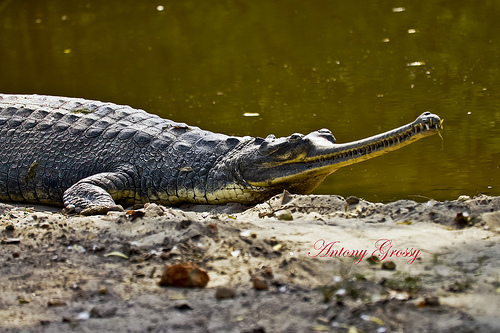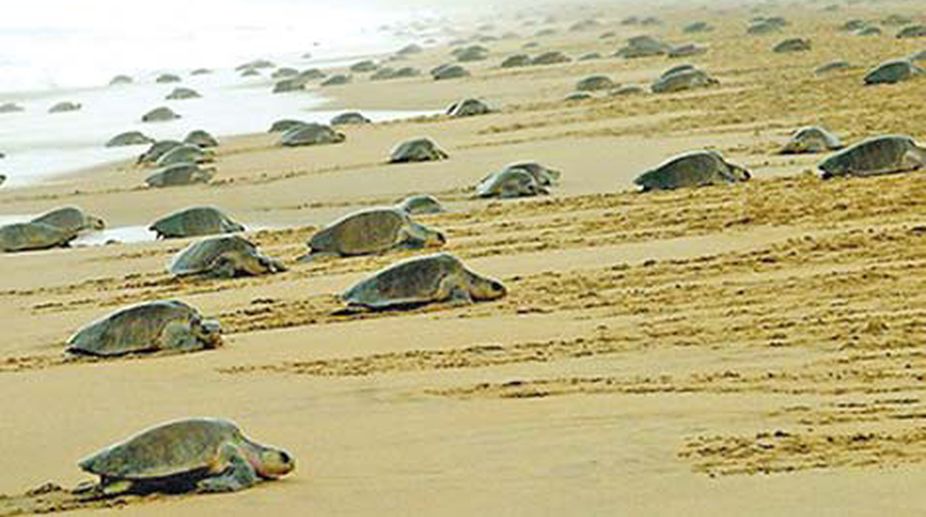
![]() A triad of local volunteers called ‘Ganga mitras’, forest department officials and WWF members got together for a good cause – caring for, rearing and reintroducing the critically endangered gharials into the river Ganga. 35 such gharials were released into the Ganga at Hastinapur in February this year. Since the start of the programme in 2009 to save the gharials, the number of the species released into the Ganga now stands at 606.
A triad of local volunteers called ‘Ganga mitras’, forest department officials and WWF members got together for a good cause – caring for, rearing and reintroducing the critically endangered gharials into the river Ganga. 35 such gharials were released into the Ganga at Hastinapur in February this year. Since the start of the programme in 2009 to save the gharials, the number of the species released into the Ganga now stands at 606.
All of these gharials were 2.8 years old – 12 males and 23 females. They were reared in captivity at Kukrail in Lucknow and transported to Hastinapur where the habitat was found to be suitable for the gharials. Movement of the gharials was done with utmost care in special wooden containers. Prior to being released into the wild, biometric details of each of the gharials was recorded at the facility and their scales/scutes were marked with cuts for identification. Their weight ranged from 4.5 to 6.5 kg and their body length lay in the range of 129 to 145 cm.

Ganga mitras or friends of the Ganga are farmer volunteers trained by WWF to contribute towards gharial and turtle conservation. Volunteers from Makhdoompur and Bijnor, Moradabad, Bareilly and Shahjahanpur districts participated in the release. The volunteers are part of an initiative with multiple stakeholders which involves the active participation of people in conservation programmes.
The release of the gharials into a stretch of river ideal for their survival was overseen by District Forest Officer, Manish Mittal.
“The state forest department, in collaboration with WWF India and local communities, is making an effort to restore the ecological health of the Ganga in Hastinapur and it is our dream to develop it into a model for aquatic biodiversity conservation,” said chief conservator of forests Mukesh Kumar.
The first set of gharials was released in the area in 2009, and since then 606 gharials have made their way back into the river.
“Re-introduction of gharials into rivers is a long-standing initiative, started in 1974, along with the other two crocodilians of India — the freshwater and saltwater crocodiles. Back then, there were only 30 adult breeding gharials and 270 in total in the entire country. Since then, more than 7,600 have been released in UP alone,” said BC Choudhury, South Asia regional head, International Union for Conservation of Nature (IUCN).
“Since 2009, after it was discovered that gharial numbers in Chambal River, their main habitat, was falling, the area around Hastinapur was identified as suitable for the reptile and batches were released here. There are around 2,500-3,000 gharials in India now, thanks largely to re-introduction,” he added.
The survival rate for the released reptiles is around 40%, based on physical sighting, monitoring and direct observation, said Asghar Nawab, senior manager, aquatic biodiversity, rivers, wetlands and water programme, WWF.

“The release is a great example of successful collaboration between local communities and government to save endangered species. It will go a long way in rejuvenating the Ganga,” said Suresh Babu, director (rivers), wetlands & water policy, WWF.
9 animals released in 2014 were tagged last year to monitor their habitat dispersal patterns and regular monitoring is currently being conducted through radio tracking.
The Gharial, a critically endangered crocodilian is one of the 7 indicator species that WWF-India works to conserve along with the Dolphin, Otter, Mahaseer and three species of Turtle
More Related Stories,
From Gharials To Dolphins, Yamuna River Lifeline For Many Indian Species










One thought on “Farmers, Forest Officials And WWF Unite To Save The Gharials”